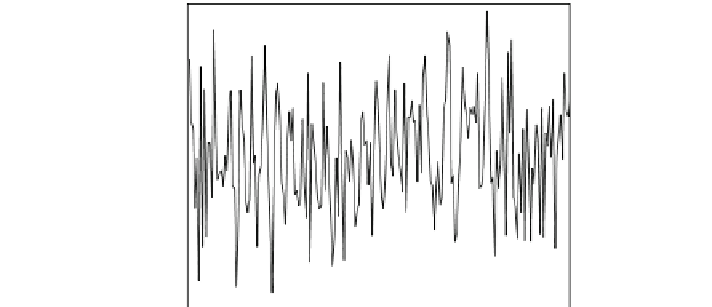Geoscience Reference
In-Depth Information
If the origin of the coordinate system coincides with the center of gravity, then these
coordinates and thus the degree 1 coefficients are zero. The second degree coefficients
are functions of the momentum of inertia and can be related directly to the figure
of the Earth. Thus
C
20
describes the flattening of the Earth and corresponds to the
dynamic form factor
J
2
=−
0 given that the z-axis approximately
coincides with the principal axis of inertia.
C
22
and
S
22
describe the asymmetry of the
equatorial mass in relation to the rotation axis and the torsion of the corresponding
principal axes of inertia (Hofmann-Wellenhof and Moritz
2005
; Torge
1989
).
C
20
.
C
21
=
S
21
=
2 Atmospheric Surface Pressure
2.1 Total Mass of the Atmosphere
The mass changes within the atmosphere, i.e. the gaseous part of the system Earth,
contribute to the total mass exchange inside the entire system. However, there is no
possibility to separate the individual components through gravity field observations.
Various authors have tried to estimate the total mass of the atmosphere evaluating
different global pressure fields as pressure reflects directly themass of the atmosphere
(Ekholm
1902
; Trenberth and Guillemot
1994
; Trenberth and Smith
2005
).
The estimates of the authors vary significantly, starting from 5
10
18
to 5
×
10
18
kg. One reason for this are the different approaches within the atmospheric
sciences and for geodesy. A second reason are the different models used, and the
differences within the models themselves. Most recent studies however, show a slight
increase in the atmospheric mass over the last decades that can be associated with
an increase of water vapor. Figure
4
shows a time series of the global mean surface
.
16
×
.
32
969
968
967
966
965
964
963
1980
1985
1990
1995
2000
2005
2010
Fig. 4
Global mean surface pressure in hPa from ECMWF analysis (1980-2009) pressure level
data reduced to surface topography


























